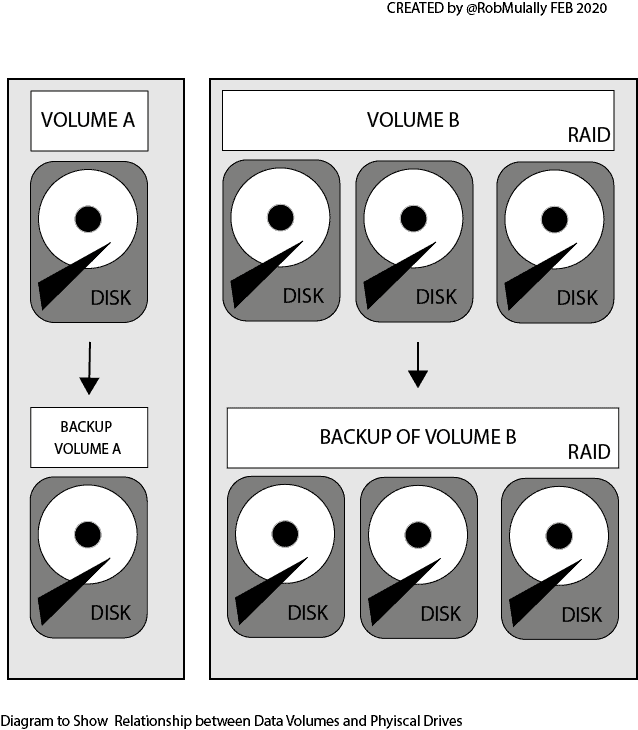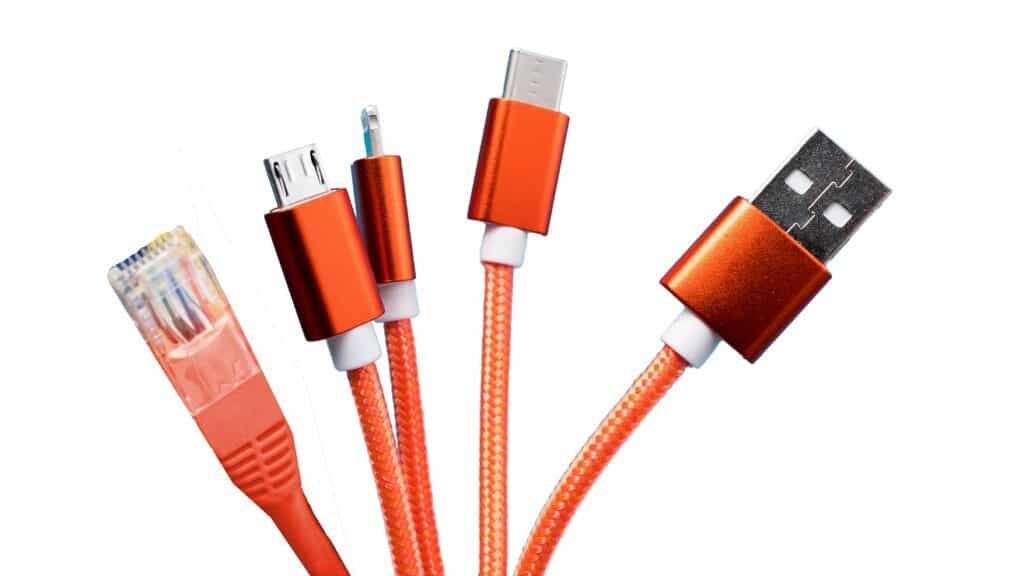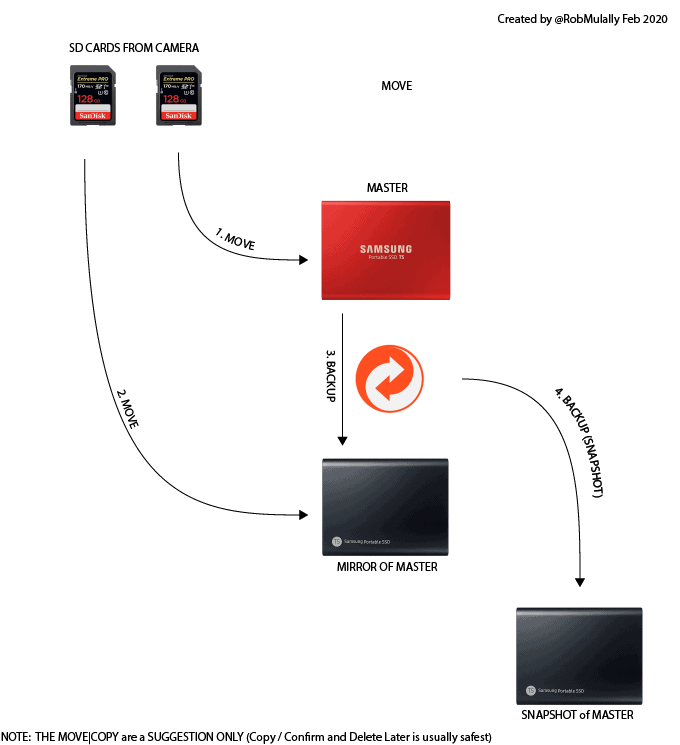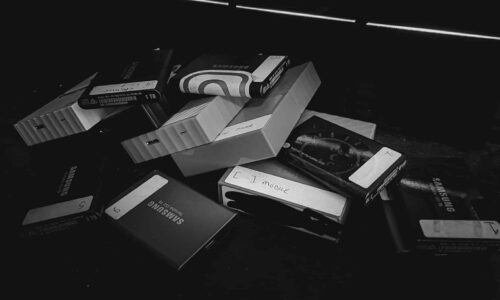TL/DR Version: You should be backing up and the best method is the one that you understand are comfortable in the backup and restore process.
Why backup is important
Everyone knows backups are important right! If you are a professional looking after client data its even more essential to be in a good habit of backing up. Hardware failures and human error are inevitable so always a good practice to try and minimize the risk of losing something important. If you are a professional photographer/creative or want to be it shouldn’t be an option it should be part of your standard procedures.
Golden rule of backup
The golden rule of backup is to have a minimum of two copies on two different pieces of hardware and preferably different physical locations. Hardware fails , fires and robberies and human error are all the things you need to account for.
Backup vs redundancy the biggest mistake!
Its a common thing to think that moving the files from your laptop to an external HDD is backing up its not, also a RAID system isn’t a backup! lets get a few bit of terminology clear and break down why its important to distinguish.
- Storage: Where files are stored, on your laptop , external drive, raid array, nas. In the computer world this is called the storage volume so basically you can think of your laptop drive as one volume and your external hdd as a second volume. This is important because sometimes in “RAID” systems one “volume” might be made from more than one Disk. Its a good habit to think this way when planning workflow.
- Backup: When you have a copy of the original storage of files.
- Redundancy: Usually referred to physical redundancy, where if hardware fails you can still operate but at a risk or loss of performance. If one drive dies do you still have two copies?
What is RAID?
Now lets talk about RAID, It gets thrown around as the savior of all things backup, so i’m guessing you have heard of it? In its most simple form its where you store data across multiple drives but they just look like a single normal HDD. So you have a Storage Volume that is using multiple disks, this allows you to have large volumes of data bigger than any single disk and you can use extra disks for redundancy allowing for failure. For a single user accessing a single volume the performance advantage of raid is hard to justify, however if you need a 60TB volume and you can only buy 10TB disks having a way to use 6 x 10TB disks starts to make a lot of sense!

Do I Need RAID?
If you can’t explain why you need raid and understand how it works I believe you should not touch it. You may see names thrown around, Raid 0 ,1, 5, 10 , There are various ways to use many physical drives to look like a single drive and each has a pro/con and added complexity. Just remember that complexity falls on you to understand and manage and test.
If you do considering getting or using raid just remember one key take away. RAID is NOT a backup, ask yourself if i lost my entire RAID , whats my backup? I’ve seen in my time many people lose jobs and companies lose clients because their backup solution was flawed. If you haven’t spoken to someone who has rebuilt a RAID using the wrong disks and corrupted all the data , just wait, you will.
The key takeaway here is ( look again at the diagram above for reference) your backing up the whole volume and data in it and need a copy of that on separate physical disks!

Connectivity and NAS vs USB:
I’m not going to get into the weeds on this, lets just keep this simple do you want to connect to your files via a standard USB cable or do you want to connect via the Network (Network Attached Storage). An advantage of the network method is that you can then make your storage visible sometimes to the cloud. A disadvantage is its more complex and often VERY SLOW unless you know what your doing and have a FAST home network.
Keeping with my theme, if your a solo creator, the idea of a NAS can sound amazing but 9 times out of 10 if i’m talking to someone about this they wish they just had the simple option of a USB cable. If your on Windows or MAC paying attention to the connection TYPE and SPEED of the DRIVE is also as important as the SPEED of the connection on your Laptop or computer. I’m currently setting a Rule for myself to keep all drives above USB 3.1, i’m keeping an eye on what products support “thunderbolt” but for now am aware that when I start to move large groups of files around time is measured in HOURS and DAYS so I want to avoid that as much as possible.
Spend some time checking what laptop you have, what USB Ports it has and if your purchasing a drive what connections it has is worth the extra time, as the drives might out live your device so a few extra dollars now might help in the future.
Questions I usually ask:
- a) If you have raid, Have you tested it? deliberately failed a drive or forced a rebuild to know how it works in case of emergency?
- b) Do you have a backup of your raid?
- c) Do you need raid? why did you decide to trust it?
I think for a lot of people I would advise against RAID for one simple factor: You need to understand how your backup system works so you are confident it is working and you can restore your files when something goes wrong.
In my previous life I have seen large corporations fall due to highly paid administration staff making errors so if you are overwhelmed by it, its probably best to avoid the complexity for now.
Solutions and Conclusion
Choosing your backup strategy is a balance of Cost, Complexity and Time, I have decided that I want to minimize the complexity and have come up with a solution that works for my needs.
So lets assume your not going to use raid for now and want to know what you can do to backup, at a minimum, keep all your files on two HDD, and copy paste one to the other, to keep a backup. Sounds simple but then you need to keep track of changes, thats where software comes in, like time machine and windows backup, but again while these are good to use, they add a complexity that can cause issues when trying to a restore a file or giving you that 100% confidence that everything you want backed up is backed up. So after trying a lot of different synchronizations software I came with my solution.
My solution and why I chose it:

I have a minimum two copies of files that I synchronize manually via GoodSync software, and before i synchronize, I look at a report that tells me what is about to happen so i can check I’m happy before continuing. I also have a way to “Snapshot” my data to a third backup location. I’ll write more about that if I get requests for an file level workflow (Drop me a DM on Instagram if that interests you)
I have tried a number of different solutions and settled on a program called GoodSync for the flexibility it offers, price and also the way it works, I have written a simple step by step guide for a backp photography workflow using goodync on my current workflow, including how I setup a quick GoodSync backup as i change a couple of the default settings to suit my needs.
For me this solution will still work if i chose to use RAID drives in the future, its just considering what Volumes I have, and how i move data between them and at no point is the process invisible to me, I can see what is happening at every point. This level of control gives me the confidence I know , how many backups i have and how i will restore the data when a drive fails.
If your interested in trying GoodSync use this link
I have created For the Step by Step Photography workflow Guide using GoodSync.





